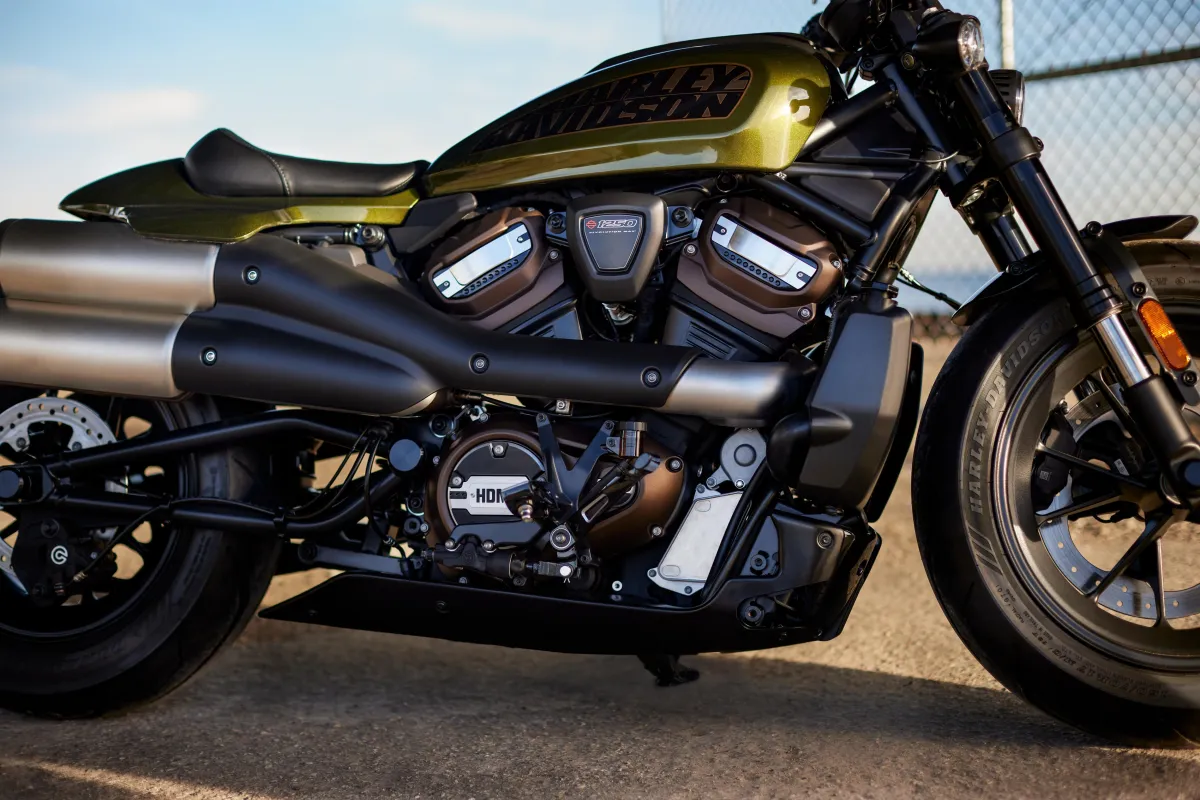
From Evo to Revolution: The Untold Story of the Sportster® S
A Radical Departure: How the Sportster® S Rewrote Harley’s Playbook
The Sportster line once defined what a "lightweight" Harley was supposed to be. Since 1957, the XL platform had stood as a gateway into the world of American cruisers—simple, stripped-down, and easy to wrench on. For decades, the Evolution (Evo) motor powered the Sportster lineup, offering iconic reliability, raw throttle feel, and that unmistakable Harley rumble.
But in 2021, everything changed.
The End of the Evo Era
Environmental regulations were closing in. Euro 5 emissions standards, along with shifting rider expectations, signaled the end of the air-cooled Evo Sportster's road-legal reign. For years, rumors swirled: Would Harley kill the Sportster altogether?
Instead, they reinvented it.
What emerged was not just an update—it was a total reinvention: the Sportster® S, powered by the Revolution® Max 1250T liquid-cooled engine. This was the same core V-twin platform that debuted in the Pan America™, now tuned for torque and aggressive urban performance.
Not Just a New Motor—A New Philosophy
Unlike its predecessors, the Sportster S wasn’t built in the traditional Sportster frame at all. It uses the engine as a stressed member in a modular chassis—a design choice common in sport and adventure motorcycles but unprecedented in Harley’s cruiser segment.
Gone were the peanut tank and dual shocks. In came a high-mount 2-into-1-into-2 exhaust, inverted forks, Brembo radial brakes, ride modes, cornering ABS, traction control, and a full-color TFT display with Bluetooth® integration.
This wasn’t an update—it was a philosophical split from the Sportster as we knew it. The Sportster S retained the name, but not the platform. For some riders, it was jarring. For others, it was the bike they never thought Harley would build—but always wanted.
Echoes of XR and Buell
Though the Sportster S may seem like a clean slate, it actually carries DNA from two often-overlooked corners of Harley’s history:
XR750 and XR1200: The flat-track-inspired styling of the high-mount exhaust and silhouette nods heavily to Harley’s racing heritage.
Buell Motorcycles: The use of advanced chassis geometry, weight reduction strategies, and unconventional engineering mirrors what Erik Buell had been pushing for decades within the Harley ecosystem.
In some ways, the Sportster S is what the Buell Lightning or XR1200 could’ve evolved into—had Harley leaned harder into performance earlier.
The Controversy and the Cult Following
The launch of the Sportster S sparked debate: Was it still a Sportster without an air-cooled motor and a steel-tube frame? Purists pushed back, but a new crowd leaned in. Metric converts, ex-sportbike riders, and even adventure bikers began taking serious interest.
It wasn’t trying to be a better old Sportster—it was trying to be a new kind of Harley: one that could go toe-to-toe with Ducati’s Diavel or the Indian FTR in both styling and power-to-weight.
Where the Sportster S Stands Today
Now several years into its production run, the Sportster S remains Harley-Davidson’s most radical middleweight. It bridges a generation gap between traditional V-twin lovers and performance-minded riders who want the tech and the torque—without leaving the brand.
At Caliente Harley-Davidson, we've watched curious riders go from skeptical to sold after just one demo ride. The Revolution Max engine’s linear powerband, crisp throttle response, and modern safety systems deliver a riding experience no Evo Sportster could match.
Final Thoughts: A New Chapter, Not the End of the Book
The Sportster S may not carry over its predecessors' rumble or wrench-it-yourself simplicity, but it carries their spirit: light, fast, and unapologetically different. It doesn’t replace the old—it redefines what comes next.
And for Harley-Davidson, that’s exactly the point.